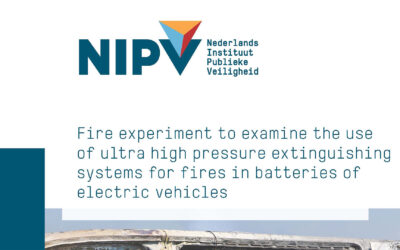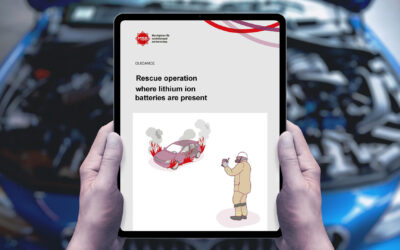FPA Technical Division A report produced by the Fire Protection Association commissioned by Greater Manchester Fire and Rescue Service 4/25/2013
Executive Summary
Prior to this study Greater Manchester Fire and Rescue Service had good evidence for the firefighting capability of Cutting-Extinguishing Watermist Systems (CEWS) but more importantly had also identified the need to explore the potential for occupant harm during operation. The main potential threats from deployment of such systems come from:
- Rapid steam expansion will act to mix up the contents of the enclosure driving smoke and heat to the floor into locations that might be forming refuge for occupants
- The enhanced ‘burn-potential’ of low temperature steam over ‘hot-dry gases’ due to the latent heat of vaporisation / condensation of water
The measurement of temperature in isolation is inadequate to describe occupant threat and the direct measurement of heat flux is additionally required. Sensors were specifically produced during the course of these tests and were demonstrated to effectively measure dry thermal and wet steam threats.
In the name of repeatability for comparative evaluation of results, a stylised crib fire was used. The suitability of the crib fire as a tangible challenge was confirmed with real-fuel load testing. During testing the potential for occupant harm was assessed for normally aspirated and wind assisted fires for different weights of response of CEWS usage.
Under normally aspirated conditions, whilst an enhanced thermal radiative dose could be experienced by an occupant at a likely refuge location during CEWS use, the magnitude of this for the given threat was shown to be around acceptable tolerance levels. It was noted that a short duration discharge (30s) exacerbated the thermal threat as it appeared to drive hot gases to the floor by steam expansion without being able to remove sufficient heat from the fire gases and this should be understood in the setting of SoPs.
Wind assisted fires, not unreasonably proved problematic for the CEWS and the best approach to dealing with them remains unresolved. Benefits from any watermist system are maximised where there is good containment of aerosol and generated steam. Under wind assisted conditions steam generation was extensive but the enhanced threat to the occupant by ‘wet’ heat was not mitigated by sufficient gas cooling and there was little legacy benefit following CEWS shut down.
In respect of firefighting performance, highlighted best perhaps in the basement simulation test, CEWS offers the potential of impacting greatly on the fire and the conditions of the compartment within without needing to face the potential risks associated with entry.
Future work should consider further options for use in wind-assisted fires, and how to embed the gained knowledge from this study into GMF&RS CEWS SOPs.


